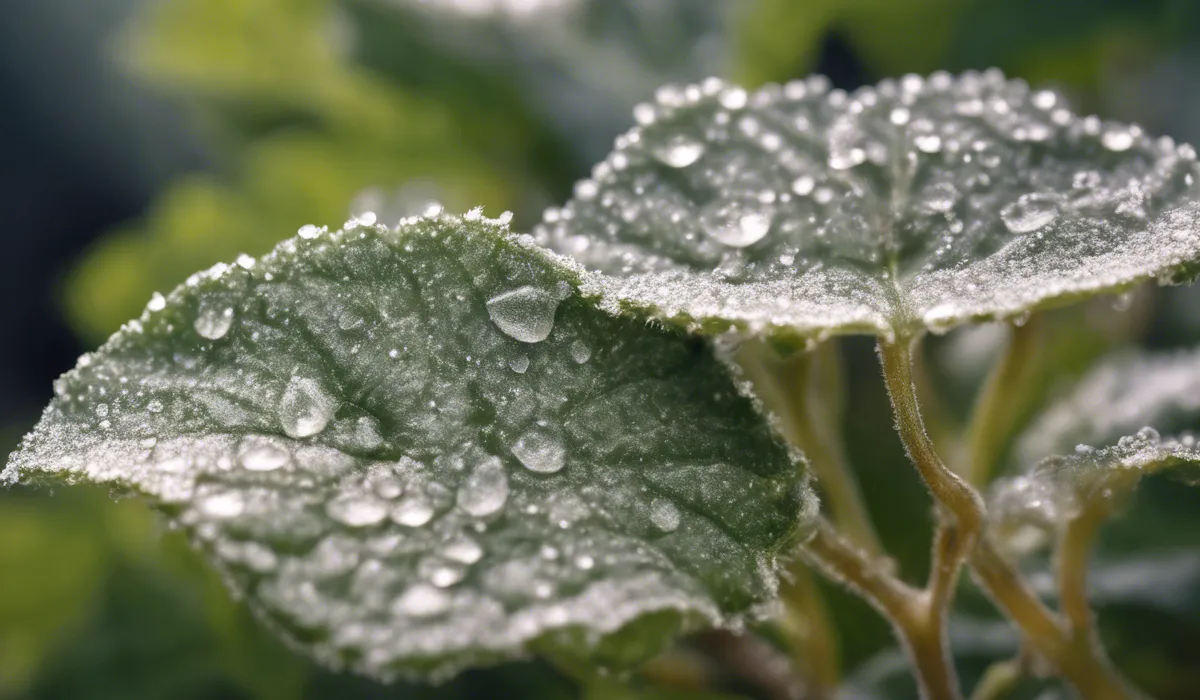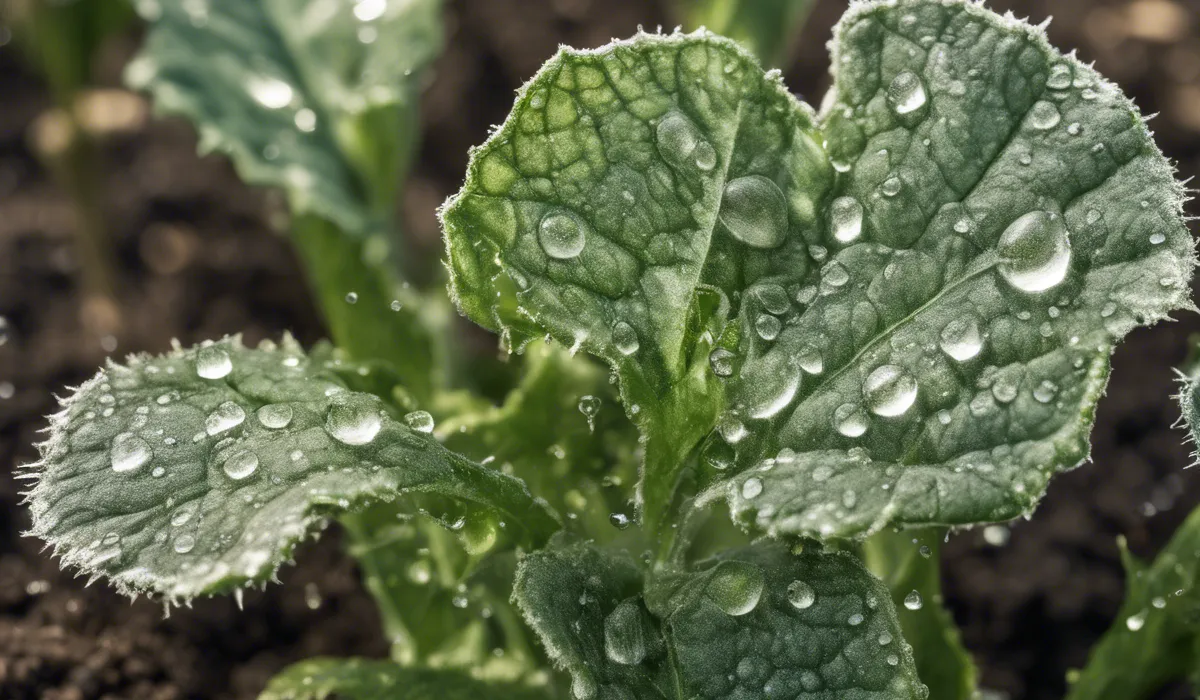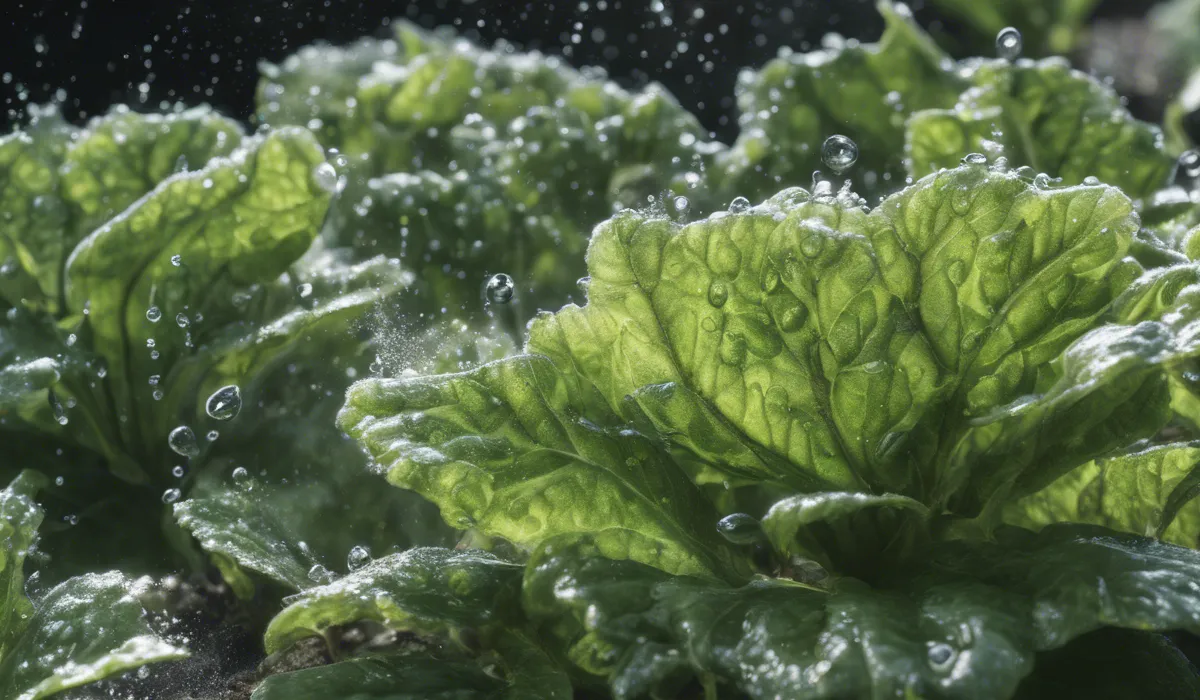No, overwatering does not cause powdery mildew. Powdery mildew is a fungal disease that thrives in dry conditions with high humidity. Overwatering can lead to other issues like root rot, but it is not directly linked to powdery mildew development.
Understanding Powdery Mildew and Its Causes

Defining Powdery Mildew
Powdery mildew is a common plant disease caused by various fungal species. It appears as a white or gray powdery coating on the leaves and stems of plants.
This disease can affect a wide range of plants, reducing their vigor and, in severe cases, leading to the death of the plant.
Humidity and Moisture Levels
High humidity is one of the primary environmental factors that contribute to the growth of powdery mildew.
The spores of the fungus require a humid environment to germinate, although they do not need free water to do so.
This is why powdery mildew often thrives in conditions where the air is moist but the leaf surface is relatively dry.
Air Circulation
Poor air circulation can create stagnant conditions that are ideal for powdery mildew spores to settle and propagate. Ensuring good airflow around plants can help reduce the risk of infection.
Temperature
The fungus prefers moderate temperatures for growth. Extreme heat or cold can inhibit its development.
Generally, temperatures between 60 to 80 degrees Fahrenheit are conducive to powdery mildew.
Plant Susceptibility
Some plant species and varieties are more susceptible to powdery mildew than others. Plants that are stressed, over-fertilized, or that have dense foliage are often at higher risk.
Relationship Between Watering Practices and Mildew Development

Overwatering and Plant Health
Overwatering can lead to a variety of problems for plants, such as root rot and nutrient deficiencies. While overwatering is harmful, it does not directly cause powdery mildew.
However, the conditions it creates can influence the presence of other fungal diseases that thrive in wet soil.
Excessive Moisture and Fungal Diseases
Excessive moisture around the plant’s root zone can promote the growth of fungi that cause root diseases.
These conditions can weaken a plant and make it more susceptible to infections like powdery mildew, although they are not the direct cause of this particular disease.
Misconceptions About Overwatering and Powdery Mildew
It is a common misconception that overwatering leads to powdery mildew.
In truth, powdery mildew spores prefer dry leaf surfaces and high air humidity, not the wet conditions usually associated with overwatering.
Importance of Watering Techniques and Timing
Proper watering techniques and timing are crucial to prevent both overwatering and powdery mildew.
Watering early in the day allows foliage to dry before nightfall, reducing the risk of mildew and other moisture-related diseases.
Preventative Measures and Best Practices for Managing Water and Mildew

Proper Watering Practices
To prevent overwatering, monitor the soil moisture consistently and establish a watering schedule tailored to each plant species.
This helps maintain optimal moisture levels without creating conditions that can encourage fungal growth.
Soil Moisture Monitoring
Use tools like soil moisture meters or the simple feel-test to check if the soil is adequately moist.
Watering should only occur when necessary, not on a fixed schedule, to adapt to changing environmental conditions.
Watering Schedules Based on Plant Species
Each plant species has unique watering needs. Research and provide the right amount of water for each plant, considering factors such as plant size, growth stage, and season.
Environmental Control
Maintaining proper environmental conditions is key to preventing powdery mildew.
Ensure good airflow, appropriate spacing between plants, and humidity control within the growing environment.
Airflow and Spacing
Good airflow can be achieved by proper plant spacing and using fans in indoor growing areas.
This helps to keep the foliage dry and reduces the potential for mildew spores to take hold.
Humidity Reduction Strategies
High humidity can be managed by improving ventilation, using dehumidifiers, and watering in a way that minimizes standing water and excess moisture in the air.
Treatment Options for Affected Plants
If a plant is affected by powdery mildew, treatment options include fungicides and natural remedies.
It’s also essential to remove and dispose of infected plant parts to prevent the spread of the disease.
Using Fungicides and Natural Remedies
Applying fungicides can help manage powdery mildew, but it’s important to follow the manufacturer’s instructions carefully.
Natural remedies, like baking soda sprays or milk solutions, can also be effective for mild cases.
Removing Infected Plant Parts
Pruning away affected areas of a plant can help control the spread of powdery mildew.
Be sure to clean pruning tools after use to prevent transmitting the fungus to other plants.
FAQs About Overwatering and Powdery Mildew
Does overwatering cause powdery mildew on plants?
No, overwatering is not a direct cause of powdery mildew; this fungal disease prefers dry conditions with high humidity.
What conditions lead to the development of powdery mildew?
Powdery mildew thrives in dry conditions with high humidity and moderate temperatures.
Can overwatering a plant lead to any fungal diseases?
Yes, overwatering can lead to fungal diseases like root rot, but not powdery mildew.
How can I prevent powdery mildew if overwatering is not the cause?
Prevent powdery mildew by ensuring good air circulation, reducing humidity around the plants, and avoiding overcrowding.
Is it possible for overwatering to indirectly contribute to powdery mildew?
While overwatering itself does not cause powdery mildew, it can stress the plant and make it more susceptible to various diseases, including fungal infections.
Final Thoughts
Overwatering is not a culprit in the development of powdery mildew, which prefers dry leaves and high ambient humidity.
While excessive watering can cause problems like root rot, it does not foster the conditions that powdery mildew requires to grow.
